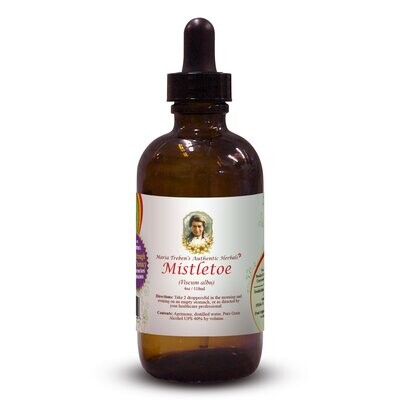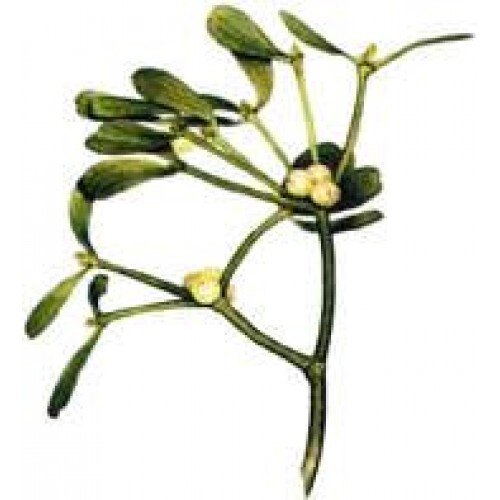



Refer a friend and get $20
662578986409

The well-known Mistletoe, an evergreen, parasitic plant, grows on deciduous trees and pine trees in a ball-like bush and is an excellent herb one should not do without. The evergreen, leathery leaves are of a yellow-green colour. The berries are whitish, somewhat opaque and sticky. Birds distribute the sticky seeds in this way: by sharpening their beaks on branches or passing the undigested seeds in droppings. Only in this way is it propagated since it has been demonstrated that seeds do not sprout when placed either in water or soil. The Druids held it in great reverence as a sacred plant that could remove every ill. It was gathered with great ceremony and cut from the tree with a golden knife. The leaves and small twigs which are cut for drying are gathered from the beginning of October to the middle of December and then in March and April. Again a hint on gathering: In March and April the Mistletoe has hardly any berries. The birds have picked them in winter. There is less work then in cutting the leaves and twigs, since the removal of the sticky berries that are still there between October and December is no longer necessary. Frequently I have been asked why I praise Mistletoe so much, since it is supposed to be poisonous. The leaves and twigs are not; only the berries, if taken internally. In general, Mistletoe tea should be drunk for six weeks, once a year; 3 cups for 3 weeks, 2 cups for 2 weeks and 1 cup for 1 week.
DIRECTIONS:
Infusion: Mistletoe tea is made as a cold infusion. A heaped teaspoon of Mistletoe is soaked in 1/4 liter of cold water overnight, the next morning slightly warmed and strained. If a larger amount per day is needed, the tea is kept in a thermos flask that has been rinsed with hot water, or warmed in a water bath each time.
Tincture: This is bought as a preparation.
Fresh juice: Fresh leaves and twigs are washed and, still wet, put into the juice extractor.
Ointment: The fresh berries of the Mistletoe are stirred into the cold lard (used for chilblains).

